June is Pride month. Here is a short and colourful guide to the history of Pride flags, courtesy of @hastingspride
The first rainbow flag was created in 1978 by Gilbert Baker (1951-2017) an American artist, designer and activist.
“I decided that we should have a flag, that a flag fit us as a symbol, that we are a people, a tribe if you will. And flags are about proclaiming power, so it’s very appropriate.”
The seven colour version was created due to the unavailability of pink fabric 1978-1979.
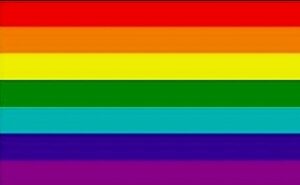
The six colour version became popular in 1979 with turquoise and indigo replaced by blue.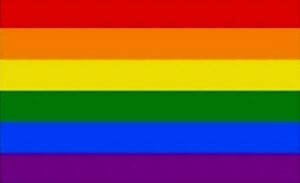
The 2017 nine stripe flag by Gilbert Baker. The lavender stripe symbolises diversity. 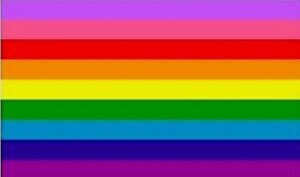
Also in 2017, the Philadelphia eight stripe flag included black and brown to bring attention to people of colour within the LGBT+ community. 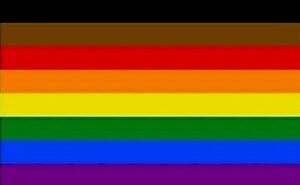
The 2018 nine stripe flag by Estêvão Romane includes a white stripe to represent all colours of religion, gender, sexual preference, ethnicities and peace and union among all.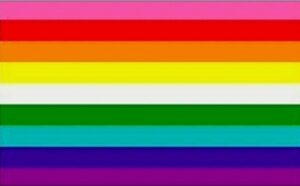
The 2018 Progress Pride flag by Daniel Quasar. This flag was designed to bring focus on inclusion and progress within the community. It includes black, brown, light blue, light pink and white. These colours represent marginalised people of colour, the trans community and those living with or lost to HIV and AIDS.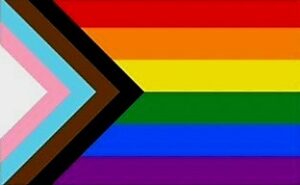
Also in 2018, queer activist Moulee created the Social Justice Pride flag. It was released in Chennai, India, inspired by other variations of the flag around the world. 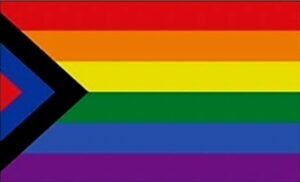
2018 also saw the new Pride flag by Julia Feliz. It integrates the historic, as well as modern day struggles of the LGBT movements within racism, following intersectionality. (The interconnected nature of social categorisations such as race, class and gender, as they apply to a given individual or group, regarded as creating overlapping and independent systems of discrimination or disadvantage). 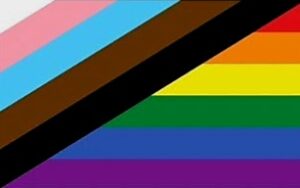
The 2021 intersex-inclusive redesign of the Progress Pride flag by Valentino Vecchietti. It raises awareness to the wider community, about where intersex sits within the LGBTQIA+ sexualities and gender identities. 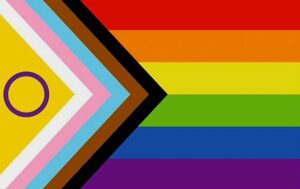
Like all great logos, the next time you see a Pride flag, you’ll understand immediately the meaning behind it. You’ll recall maybe its history and certainly its evolution and you’ll be reminded of the diversity of the human race. You’ll also think of the new word you learned, intersectionality, even if you can’t quite remember what it means. Happy Pride Month and in the famous words of Dolly Parton in her 1971 song Coat of Many Colors:
“There were rags of many colours but every piece was small
And I didn’t have a coat and it was way down in the fall
Momma sewed the rags together sewing every piece with love
She made my coat of many colors that I was so proud of.”
Image Credits: Hastings Pride , Hastings pride .



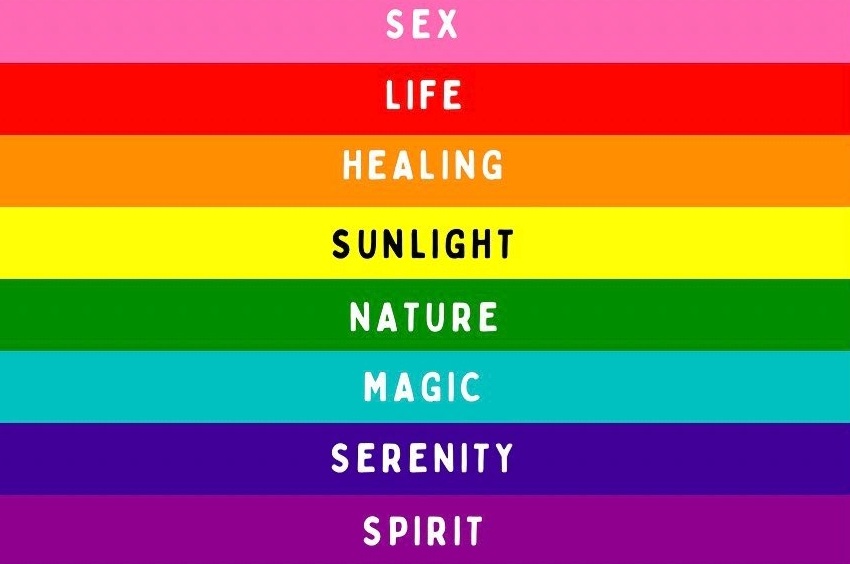
From my first ever Pride to today’s Hastings Pride (Sunday 27th August) is about 30 years! Any Rye and Winchelsea folk at todays Pride please say hello, I’ll be sporting red jeans, a white T Shirt (my revamped Outrage T-shirt from the early 90s) and possibly some face crayon. RN was too full to publish my letter about what Pride means to me but I hope they can fit in my account and photos to follow.
Happy Pride everyone celebrating and remembering. And thanks Natasha for an enlightening article on the history of the Pride flag.